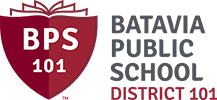How Filtering Works
BPS101 uses Lightspeed, a web-filtering system that classifies millions of websites into categories such as Education, Social Media, Games, Adult Content, and Security Risks. Filtering is applied at the category level. The internet changes too quickly to approve or block individual websites one by one, so category-based filtering is the only workable approach to meet safety expectations and federal CIPA requirements.
Key points:
- Categorization is performed by Lightspeed as part of our subscription.
- Filtering rules follow Board policy, grade-level expectations, and student safety needs.
- Teachers can request access to needed instructional resources that fall in blocked categories.
What We Block and Why
Blocked categories include adult content, violence, gambling, drugs, hate and extremist material, malware, anonymous proxies, and VPNs. Younger grades also include most social media or gaming platforms. These categories create safety, developmental, or security risks.
Allowed categories include curriculum resources, instructional tools, assessment platforms, research sites, productivity tools, and education-aligned content. Many of these resources integrate external media, such as embedded videos, publisher-hosted clips, or interactive modules.
Grade-Level Differences
Filtering levels increase in access as students get older. Examples:
- Elementary: Most social media, gaming, and forum sites are blocked.
- Middle School: Some collaborative platforms may open, but social media remains restricted.
- High School: Access expands for research and curriculum needs, with adult content and safety filters still enforced.
Why Some Content Still Appears
No filtering system is perfect. New sites and new content appear faster than they can be categorized correctly.
Common situations include:
- Newly created websites that have not yet been reviewed
- Search engine thumbnails or preview images
- Ads displayed by third-party sites (even though the underlying content is blocked)
- Embedded media inside educational apps
- Videos hosted on large platforms like YouTube or Vimeo that appear before categorization
- Dynamic or user-generated content that changes continuously
When families or staff report concerns, the District reviews the specific item, blocks it if appropriate, and submits a reclassification request to Lightspeed.
YouTube in Context
YouTube is one example of how dynamic content behaves. Teachers rely on it for demonstrations, tutorials, labs, and curriculum materials. Blocking YouTube entirely would disrupt instruction. Education-only modes remove a large amount of legitimate instructional content, making them impractical for many classes.
We mitigate risk through Restricted Mode, age filters, and removal of comments and recommendations. Even with these controls, newly uploaded videos may appear before Lightspeed or Google categorizes them.
Device Differences
Filtering applies to District-issued student devices on any network.
Personal devices connected to home networks or cellular data are not filtered by the District, which can lead to different experiences between home and school.
Bypass Attempts
Lightspeed blocks VPNs, proxies, and other bypass tools. Attempted bypasses generate alerts for technology staff, and repeated attempts may trigger school-level follow-up.
What Parents Can Do
If you see a concerning site, image, or video:
- Report it to your school or the Technology Department.
- We will review it and block it if needed.
- We will request a category update from Lightspeed when appropriate.

